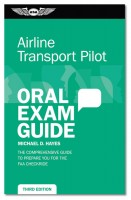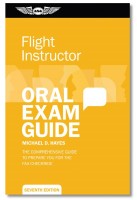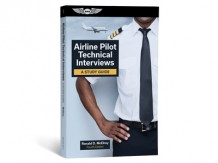EVERYTHING FOR PLANES AND PILOTS SINCE 1965 | 877-4-SPRUCE
ASA Pilots In Command: Your Best Trip Every Trip
Select Version Type:
 Softcover Book
Softcover Book eBook EB
eBook EBOverview
|
Airline pilots are looked upon as leaders by passengers, crew, and employers alike. Newly hired pilots, as well as current pilots upgrading to become Captains, are required to have training, experience, and skills that demonstrate practical leadership ability and professionalism. Beyond accumulated experience in the flight deck, pilots need straightforward guidance on how to fulfill the role of pilot-in-command. Pilots know that when things go wrong, everyone looks to the captain—the pilot-in-command—to make things right.
Pilots In Command: Your Best Trip, Every Trip goes beyond what is required by flight training curricula, into what is both a rarity and a necessity: solid advice to student and professional aviators about how to be transformational leaders. This second edition includes new discussions on professionalism and safety for today’s airline operations. Focusing on a range of topics that all tie into the application of basic leadership skills, the author covers crew roles, crew briefings, flight attendants, crew resource management (CRM), threat and error management (TEM), ground services, dispatch, customer service, abnormal and emergency situations, layovers, crew dynamics, 14 CFR Part 117 rest rules, safety, and a new model of transformational leadership and professionalism for pilots. Especially relevant for new airline pilots and Captain upgrade candidates, Pilots In Command shares the insights and techniques typically gained only from years of experience and interaction with your fellow pilots and crew at 35,000 feet. |
Specifications
- Author: Kristofer Pierson
- ISBN: 978-1-61954-466-6
- Edition: Second
- Page Count: 216 pages
- eBundle / eBook
- ASA eBooks are for one person's use and can be read on up to five devices total using e-reader applications that are compatible with an Adobe ID. To read eBooks on more than one device, the e-reader applications on those devices must be authorized with your Adobe ID.
- To create an Adobe ID, or to recover lost or forgotten ID information like your login or password, (Click Here)
Version Types
eBundle / eBookASA eBooks are for one person's use and can be read on up to five devices total using e-reader applications that are compatible with an Adobe ID. To read eBooks on more than one device, the e-reader applications on those devices must be authorized with your Adobe ID.To create an Adobe ID, or to recover lost or forgotten ID information like your login or password, (Click Here)Q&A
Please note, Aircraft Spruce's personnel are not certified aircraft mechanics and can only provide general support and ideas, which should not be relied upon or implemented in lieu of consulting an A&P or other qualified technician. Aircraft Spruce assumes no responsibility or liability for any issue or problem which may arise from any repair, modification or other work done from this knowledge base. Any product eligibility information provided here is based on general application guides and we recommend always referring to your specific aircraft parts manual, the parts manufacturer or consulting with a qualified mechanic.




































